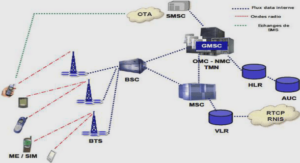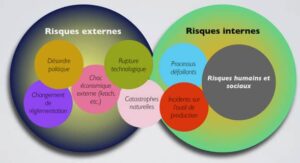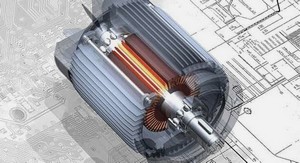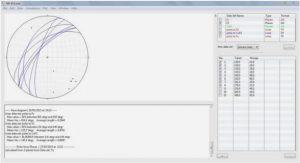The study of the Vertical Take-Off and Landing (VTOL) Unmanned Aerial Vehicle (UAV) has been growing intensively by researchers in the recent decades. The UAVs have gradually been adopted by the public to be used in several areas. In fact, several industries (automotive, medical, manufacturing, space,..etc.), require the use of UAVs. They are also starting to spread in the field of delivery especially with online shopping. Several structures and configurations of UAVs have been developed to allow 3D movements. For example, there are blimps, fixed-wing planes, single rotor helicopters, bird-like prototypes, quadrotors, Each of them has advantages and drawbacks.
Drones have evolved throughout this century to be used today in many areas. A drone is a flying machine that does not use a human pilot. These aircraft were used for the first time in the military field during the First World War. The evolution of technology, particularly in electronics, has significantly improved the performance of the drone. The drones are now employed in the medical field (Pulver et al., 2016), audiovisual (Nägeli et al., 2017) and engineering (McCabe et al., 2017). Recently, among the developed rotary-wing UAVs is a particular fixed-pitch 4-rotor UAV, namely the quadrotor. The quadrotor is one of the existing drones that feature two sets of identical propellers that are powered by DC brushless motors to provide the required thrust force and perform maneuvers when they are in flight. Quadrotor has the advantages of light-weight configuration and inherent instability, which improves its flight maneuverability over fixed-wing UAV. More importantly, quadrotors have the capabilities to perform VTOL and hovering in mid-flight.
The Vertical Take-Off and Landing requirement of this project excludes some of the previous configurations. However, the platforms which show this characteristic have a unique ability for vertical, stationary and low-speed flight. The quadrotor architecture has been chosen for this research for its low dimension, good maneuverability, simple mechanics and payload capability. As the main drawback, the high energy consumption can be mentioned. However, the trade-off results are very positive. These properties are some of the reasons for the expansion of quadrotor research. In addition, this structure can be attractive in several applications, in particular for surveillance, imaging, dangerous environments, indoor navigation, and mapping. The goals of this thesis are the quadrotor identification, system modeling, the control algorithm design evaluation, the simulator design, and the real platform development .
The parameters of the quadrotor are identified to allow the implementation of several types of controllers. The study of the kinematics and dynamics is helpful to understand the physics of the quadrotor and its behavior. Together with the modelling, the determination of the control algorithm structure is very important to achieve a better stabilization. The whole system is validated and tested using Matlab-Simulink. Quadrotors are often used outdoors using a GPS (Global Positioning System). Most research, however, is done in laboratories where GPS cannot be used, and therefore another position detection system must be found. The most widespread solutions use motion sensors. These sensors can be however expensive, limiting the development of quadrotor research. The Microsoft Kinect, initially intended for entertainment, has been the subject of several types of research on the detection of human movements. This research was extended to the detection of objects. Some of the aspects that make researchers choose the Kinect are its price, which is affordable, and the interest to use the camera that has become important. In 2013, Microsoft released an improved version of the Kinect called Kinect One. This camera offers better accuracy and a high definition camera. Using the Kinect One, it becomes easy to detect the position of the quadrotor and makes it possible to test quadrotors in laboratories with an affordable equipment price. However, the limitation of the Kinect is its accuracy where the systematic error is around 3 cm, and it increases on the periphery of the range image and for increasing object-camera distance (Khoshelham & Elberink, 2012). In order to speed up the delivery order and supplementing manpower shortages, online retail giant Amazon (Amazon, 2015) exploited drones through the use of quadrotors to fly autonomously and make deliveries to its customers. Quadrotors can also be handily mounted with high-resolution cameras photographers and filmmakers to capture high altitude pictures with out having charter a flight during production. The popularity of the quadrotor extends to the field research laboratories as well. Quadrotors with their small size, VTOL and hovering capabilities can easily operate in an indoor environment of research laboratories. In recent years, commercial quadrotors such as crazyFly, AR Parrot,etc., have become increasingly popular and relatively cheap for UAV research.
However, commercial quadrotors are typically associated with their own hard-coded software and pre-programmed plant model. Therefore, to perform complex flight controls or modify their mathematical model, it is required to modify the quadrotor’s autopilot embedded code. In academic research, the objective of the control system design would require implementing the Simulink system model and controller design as embedded software into autopilot hardware via a specific Micro-controller (MCU) platform and language implementation. Amongst the commercial quadrotors, PX4 open hardware project elaborated in (Meier et al., 2015) has designed the Pixhawk autopilot system that can be programmed using the PX4 flight stack software (L.Meier, 2015). Pixhawk uses PX4 flight stack software that runs on Nuttx RTOS and is able to support multiple applications that can be programmed individually. More importantly, PX4 is able to support system models and control algorithms developed using Simulink without for the need to be proficient in high-level programming. This capability allows for a research project to rapidly progress from the modeling and simulation to implementation phase on the actual hardware. The quadrotor is listed under Rotary-wing UAVs category because it has several rotors. It is composed of five main elements: the four motors, the chassis, the IMU, the electronic card and the radio receiver. Quadrotor has attracted great interests in both control and robotics communities due to its simpler mechanism in comparison to the traditional helicopters.
Quadrotor Dynamics and control
This section provides a vast summary of some of the methods that have been engaged in the literature for the Modelling and robust control of quadrotor UAVs. The literature review provides the motivation for the research areas on which this work focuses. Some of the issues discussed in this chapter are considered in detail in the relevant chapters of the dissertation.
UAV Modeling
A quadrotor UAV is considered as a rigid body in 3-dimensional space. It has 6 degrees of freedom, three translational and three rotational degrees of freedom. The first three translational degrees describe the UAV position which a trivial task and the other three degrees describe the UAV orientation which is a somewhat complicated task and has implications on the derived model. Some methods exist for defining the orientation of a generally rigid body in space. The most widely used methods in aeronautical applications are quaternions and Euler angles, (Jia, 2013a; Michael et al., 2010). Euler angles shall be the focus of this discussion. They comprise three angles: yaw, pitch, and roll, which are used to describe the orientation of a rigid body. One of the advantages of the Euler angles approach is that it is intuitive and it is easy to visualize rotations described in this way. On the other hand, its disadvantage is the « gimbal lock » phenomenon which is an exhibition of singularities that restricts the trajectory tracking of the quadrotor. Due to this phenomenon, some of the control algorithms that are designed for UAV modeled using this approach are not capable of executing aggressive aerobatic maneuvers. Unlike Euler angles, the quaternion method does not suffer from the singularity issues and thus provides a globally valid way of representing UAV orientation. Additionally, in comparison to Euler angles, the quaternion is computationally efficient as it uses a 4 element vector to describe rotations compared to a 3×3 matrix in the case of Euler angles. Despite these advantages, quaternion is less used in modeling quadrotors because they are conceptually challenging to understand and are not very intuitive. In this work, Euler angles are used for representing the quadrotor UAV’s orientation. Due to the limitations of Euler angles, the controller is designed in such a way that gimbal lock is avoided.
In order to derive the equations of motion of the quadrotor, it is common to assume that the vehicle is a rigid body. Euler angles method is used to describe the motion of a rigid body in 3-D space governed by the Newton-Euler equations. Given the full dynamics of the quadrotor, when it hovers at a certain height in the presence of small perturbations, the angular rotations of the quadrotor are independent on its linear translations, while the translational motions of the quadrotor depend on its orientations (Bouabdallah, 2007). Therefore, the dynamic system of the quadrotor can be divided into two subsystems: The position subsystem and the attitude subsystem. The control algorithm can be designed using two types of system structures: The outer-loop control structure to control the position (Lee et al., 2009), (Alexis et al., 2016) and the inner-loop control structure to control the attitude (Choi & Ahn, 2015), (Cao & Lynch, 2016).
In practice, the quadrotors motion cannot always be described by their exact dynamics due to the existing uncertainties mainly caused by model uncertainties, external disturbances, and inaccuracy of measurements. Each part of these uncertainties is described below.
• Model uncertainties
Model uncertainties are mainly caused by the following reasons: 1) The linearized quadrotor dynamics are widely used to simplify the controller design. 2) Some system parameters are inaccurate including the inertia and the weight of the quadrotor. 3) The motor dynamics are assumed to be that of a first-/second-order system, which may not exactly describe the thrust generated by the propellers. The problem of the model inaccuracy can be solved by identifying the system dynamics through experiments (Bouffard et al., 2012; Iskandarani et al., 2013; Alexis et al., 2011), or by considering it as an external disturbance (Lee et al., 2009; Choi & Ahn, 2015; Bouffard et al., 2012) .
• External disturbances
During the flight, the quadrotor is usually affected by external disturbances, including severe wind, actuator failure, and additional payload. In (Alexis et al., 2012b), the quadrotor is operated under a strong wind. In (Dai et al., 2014), an unknown payload is connected to the quadrotor by using a flexible cable. The loss of the motor effectiveness is considered and handled in (Sharifi et al., 2010).
• Measurement inaccuracy
The inaccurate measurement is usually produced for the following reasons: 1) There exist sensor noises so that the measured data are inaccurate. 2) The sensor loses its effectiveness leading to the unavailable states. To solve this problem, observers are usually adopted; as described in (Berbra et al., 2008).
CHAPTER 1 INTRODUCTION |





